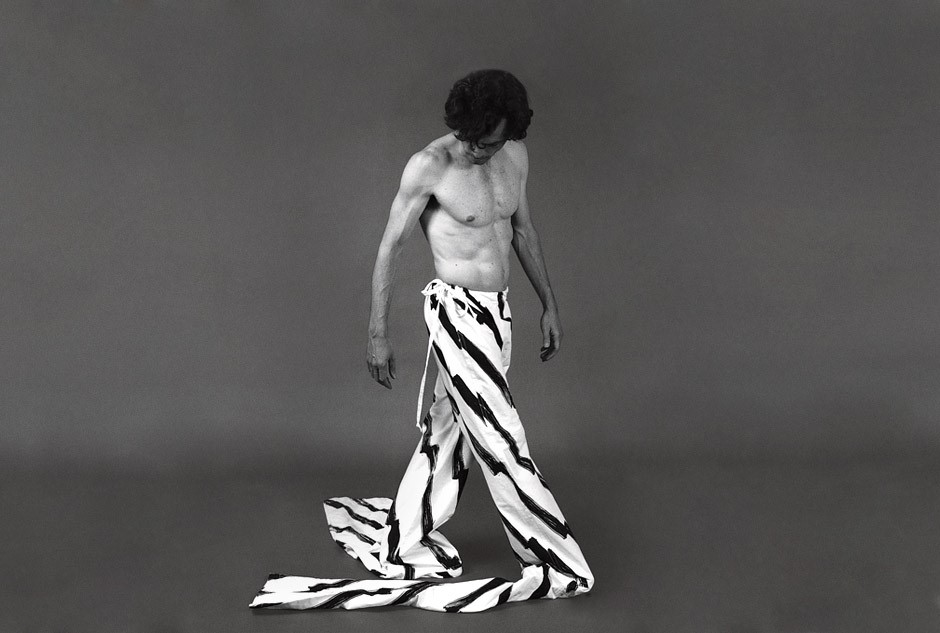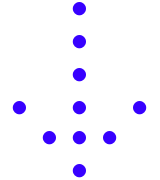The Fabric Workshop and Museum (FWM) proudly presents the Philadelphia premiere of Both/And Richard Tuttle Print and Cloth. This unique, multifaceted installation of over five decades of work—from the mid-1960s to present—was conceived by Richard Tuttle, offering one of the most comprehensive experiences ever of this influential, contemporary American artist, who has a long history of collaboration with FWM, beginning in 1978 shortly after the Museum was founded by Artistic Director Marion Boulton Stroud. FWM will host a Press Preview on Thursday, May 14 at 10:30 am, a Public Opening Reception on Friday, May 15, 2015 from 6:00 to 8:00 pm, as well as a 5:30 pm Members Preview: Artist Discussion at FWM, 1214 Arch Street
This installation will feature work from Tuttle’s two landmark textile and print surveys that originated in 2014:
- Richard Tuttle: I Don’t Know . The Weave of Textile Language organized by Whitechapel Gallery, London, curated by Magnus af Petersens, Chief Curator, with Poppy Bowers, Assistant Curator, Whitechapel Gallery.
As a collector of textiles from all periods around the world, Tuttle approaches the mystery he finds in them by the humble attitude expressed in the exhibition title, ‘I Don’t Know .’ Because textiles run the risk of not being seen he feels we need to sharpen our senses.
Excerpt from Whitechapel Gallery, London. Richard Tuttle interpretation panels (2014): 13 Jan 2015 <http://www.whitechapelgallery.org >.
- Richard Tuttle: A Print Retrospective Bowdoin College Museum of Art, Maine, curated by Independent Curator Christina von Rotenhan.
Ink on paper, oil and water, these two infinities resist. Paper is wetted to receive the greasy ink. The eye can witness minutiae; the mind can receive every degree in the battle between opposites, tell us something accurate and precise not possible in ink alone or water alone.
Richard Tuttle, “A Connoisseurship of Metaphor: Recent Prints by Richard Tuttle,” Art Journal 70, no.4 (Winter 2011), p. 140.
At FWM, the exhibition Both/And Richard Tuttle Print and Cloth will also include new prints from the publishers Universal Limited Art Editions (Bay Shore, New York) and Gemini G.E.L. (Los Angeles, California), as well as the international premiere of new kimono work by the artist.
“Art always comes from art.”
— Richard Tuttle
Richard Tuttle collaborated with FWM in 1978, and nearly twenty years later in 1998, to create new projects using fabric. During his first residency, Tuttle embraced the hand screen-printing process and the idea of fabric to make a series of clothing—Shirts in 1978 and Pants in 1979. These projects were the costumes for a dance performance in 1979, worn by members of the Pennsylvania Ballet. Then in 1998, also utilizing the hand screen-printing process, Tuttle’s project The Thinking Cap maintains a connection to conceptual fashion, yet instead of a shape connecting to the body, this work focuses on the mind. The Thinking Cap, as presented in the press cover image, is displayed on another collaborative project 24, a minimal sculptural table.
Currently an Artist-in-Residence at FWM, Tuttle’s new kimono work “Extraordinary” from this 2014-2015 residency will be on view in this major exhibition. The hand-sewn yukatas, or summer kimonos, are made of Sarashi cloth, a traditional Japanese cotton fabric. There are two editions of 20 plus 4 artist proofs, one for men and one for woman. The design and pattern in this edition of new work are Chusen dyed, a traditional Japanese method of dyeing using stencil paper, by Miyamoto Co., Ltd., in Osaka, Japan. The pattern in the woman’s yukata design is rotated 90 degrees when compared with the man’s design. As Tuttle stated in a conversation with the FWM studio staff, “By changing direction of the bars, dynamic energy is achieved.”
An exhibition brochure with an introduction by Marion Boulton Stroud, and contributions by FWM’s Artistic Advisor Mark Rosenthal and Curators Magnus af Petersens and Christina von Rotenhan, accompanies Tuttle’s dynamic work, which exists in the space between painting, sculpture, poetry, assemblage, drawing, and printmaking. The brochure checklist will pair the works of art on view with poems by the artist that are directly inspired by his pieces.

 Download the Press Release PDF
Download the Press Release PDF